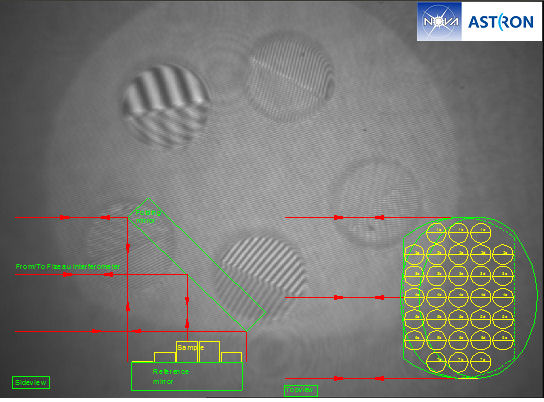Daily Image
01-10-2010No image found for date: 01-10-2010
The most recent image is 01-10-2010 which is shown below:
The most recent image is 01-10-2010 which is shown below:
Cryogenic CTE and IoR measurements
| Submitter: | Eddy Elswijk |
| Description: | In order to design cryogenic optical instruments, both the Index of Refraction (IoR) and the Coefficient of Thermal Expansion (CTE) of the applied materials must be known over a wide range of temperature. However, since such data is only sparsely available, the NOVA-ASTRON optical group is compelled to gather it itself. Fortunately, this is a pleasant and interesting chore. Now that the necessary infrastructure is available, i.e. a large Fizeau interferometer and a cryostat with an optical window, the first results are expected in a few months. The setup consists of a reference mirror above which the samples are positioned, and illuminated with a beam of monochromatic light. A folding mirror directs the two interfering beams to the interferometer. One half of the optically transparent samples is mirror-coated. The coated and uncoated sides are used to measure the CTE the IoR respectively. When changing between cryogenic and room temperatures, the fringes will "walk" across the sample due to changes of size and IoR. Obviously, this has to be corrected for movements of the reference mirror. The Computer Vision knowledge-centre (Kenniscentrum) of the Noordelijke Hogeschool Leeuwarden is investigating how this fringe movement can be measured and interpreted. Undergraduate student Tessel van der Laan has been heating up half-coated samples and recording the fringes. A typical image is shown above. The high-contrast fringes represent the coated side of the samples. In the low-contrast part of the top-left sample, the internal fringing of the sample is visible. The latter tells us that the shape of the samples requires a sufficiently steep wedge in order to avoid such interference (pun intended). |
| Copyright: | NOVA-ASTRON |
| Tweet |  |
